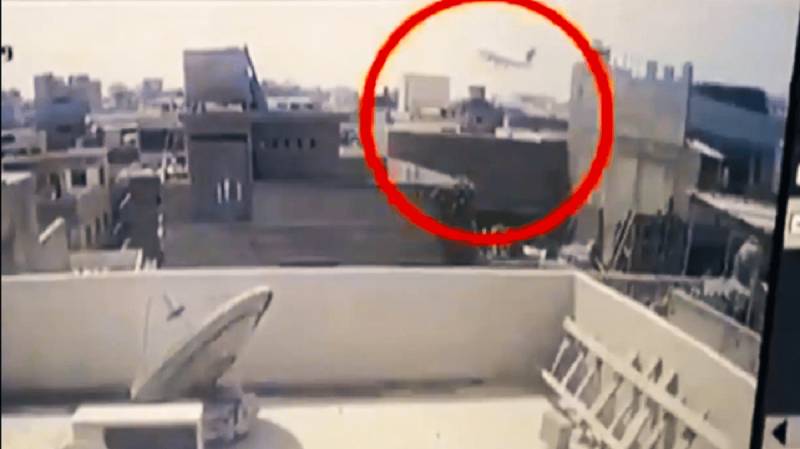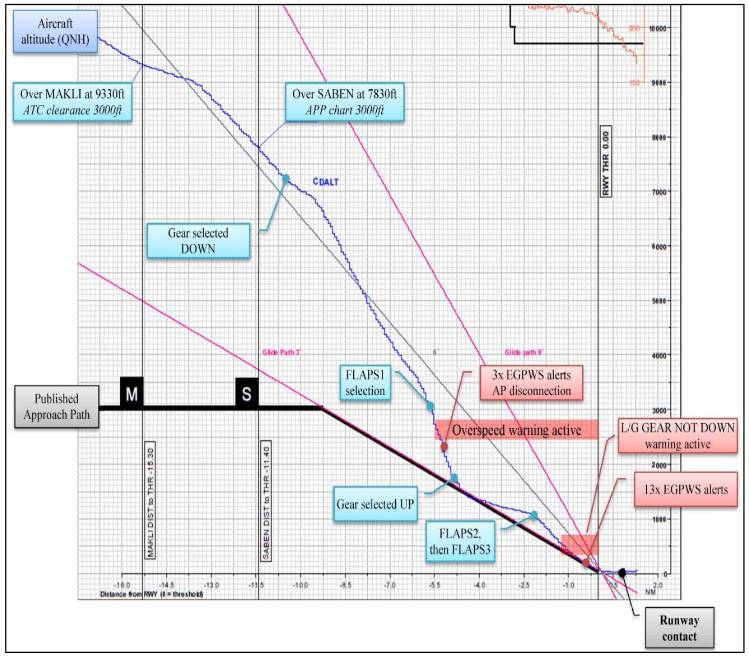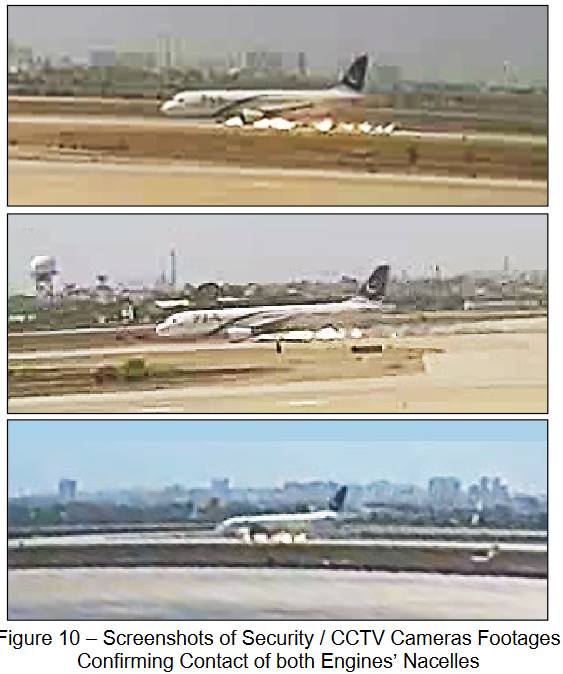
Four years after PIA Flight 8303 from Lahore to Karachi crashed while attempting to land in Karachi, the full investigation report has been released. The report has suggested that human error could be the reason for the crash.
The 160-page report was released by the Aircraft Accident Investigation Board (AAIB) and the Aviation Division. It reviewed all aspects that led to the crash of the Airbus A320 in Karachi on May 22, 2020, which left 97 passengers and crew dead. Two passengers miraculously survived. At least four people were injured, one of whom later died during treatment.
The report stated that the plane was flying too high and fast as it landed at the Karachi airport. It was repeatedly warned about its height and offered to delay its landing and come around for a second approach, but the pilot disregarded the instructions.
It landed once without any landing gear extended and dragged itself on the runway on a bed of fire before taking off and attempting to land a second time with landing gear down, but it never made it.
The report contained a timeline and transcript of cockpit and air traffic control conversations gleaned from the flight recorder and other on-ground tracking methods.
In the four minutes from when the plane was first asked about its excess height and told to delay its landing to when it made contact with the ground, the pilots were told four times about their height and to abort the landing before being cleared to land on the fifth call — which was about a minute and a half before it made the first landing.
The report said that it was too high when the aircraft entered the final leg of its journey. It was flying at over 7,830 feet when it entered the final 11.4 nautical miles segment when it was supposed to be at a height of around 3,000 feet.
Realising they were too high for a landing, the pilots put the plane in a virtual nose dive to attain an altitude that would allow them to land. This, however, automatically cancelled the autopilot modes. During this period, the landing gears were inexplicably retracted. The report suggests the landing gear was retracted manually, but there was no call out or crosscheck between the pilots for either lowering or retracting the landing gears.
Even though the aircraft's systems warned the pilots around 1.5 nautical miles from the runway about the landing gears being retracted when the plane was still at a height of 750 feet and 40 seconds from landing, the pilots decided to cancel the warning rather than heed it and put the landing gears down.
At a height of around 365 feet and around 30 seconds from landing, a button to cancel the overspeed and landing gear warnings was pressed, and the pilots put the plane down to land. By this point, the captain had taken over control of the aircraft.
Instead of pursuing standard "going-around" procedures, given the plane had exceeded the accepted parameters for landing, the pilots proceeded to land the aircraft in an unstabilised approach.

Believing the landing gear was down, they put the plane's nose down and attempted to engage reverse thrusters on the engines and push the brakes.
The plane, though, made ground contact but without any landing gear. It dragged its engines on the ground for over 2,000 feet for 18 seconds, causing flames to erupt under the plane and severely damage the engines.
It even caused an engine fire warning to be triggered in the cockpit for seven seconds.
The flight officer realised what had happened and told the captain to take off about 14 seconds into the plane being dragged on the runway.

The captain listened to the flight officer, disengaged the brakes and pushed the thrusters to take off. Four seconds after the aircraft started gaining altitude, the pilot told the air tower they would go around.
Curiously, when the plane climbed to 140 feet, the pilots tried to lower and raise the landing gears. However, the plane's computer did not register a lock position, whether at down or up positions, indicating that the landing gears had jammed.
While the plane managed to climb to 2,670 feet, its engines started to fail after it was told to adjust its direction and attempt to land again. The engines had suffered severe damage while being dragged on the runway, losing electrical current and oil pressure.
The engines began to stall. Before that warning, the air tower asked the flight crew whether their landing gears were down.
Around 30 seconds later, the Karachi airport asked the plane whether the plane was losing altitude. At this, the flight officer requested clearance to fly the plane at 2,000 feet.
However, the plane continued to lose altitude as its engines started to fail. When the pilots were asked about altitude they responded by saying: "Copied we are
maintaining, trying to maintain".
As they attempted to manoeuvre the aircraft and determine the conditions of the engines, the captain asked the flight officer, "You had selected Engine No. 2 to IDLE, whereas Engine No. 1 was gone". The flight officer responded with "yes".
A few seconds later, warnings of engine stall sounded in the cockpit. The captain asked his flight officer about the noises, who responded by asking the captain to reduce the speed.
A minute later, engine one stopped functioning, and engine two stalled with CVR and spectral analysis indicating master caution for stall. The flight officer asked the captain to increase the speed of the engines. When the warning ended, the flight officer told the captain to continue increasing the speed, to which the captain responded, "How would I increase speed?".
As the aeroplane attempted to turn back towards the airport, the flight officer told the radio control tower, "We will be proceeding direct, Sir. We have lost Engines".
The control tower asked whether the plane would be conducting a "belly landing" (a landing without landing gear). However, the flight officer replied negatively.
At this point, the captain asked the flight officer whether the landing gears were extended. The flight officer said they were not extended and proceeded to extend them.
At 9:39:42, around five minutes after suffering ground impact and then taking off, the plane captain told the cabin crew to take their seats, and then the flight officer told them to take their stations for landing.
Four seconds later, the captain called to the tower, declaring "Mayday" with stall warnings in the cockpit.
Over 30 seconds later, the plane crashed at 9:40:01.
The report noted that the captain was quite experienced, with over 17,000 total flying hours, including over a thousand hours as captain. He had been licenced and was flying the particular aircraft model for five years before the crash. His psychological profile, however, indicated he was of a bossy nature and did not listen to authority.
Moreover, the report noted that the flight crew did not apply procedures or adhere to standard operating procedures.
It further noted that the flight crew was not on the same page with each other, with the first officer failing to challenge the captain on the aircraft trajectory or when incorrect modes were selected.
The flight history of the captain in the 12 months leading up to the ill-fated flight showed numerous triggers during approach related to high speed, path high, high rate of descent, long flare distance and GPWS warnings. There were no go-arounds initiated, and several unstabilised approaches were continued - reflecting a lack of good airmanship.
On the part of Pakistan International Airlines (PIA), the report said that PIA maintained flight data analysis at less than five percent while there was no dedicated flight data analyst available in the airline's safety department till the incident.

